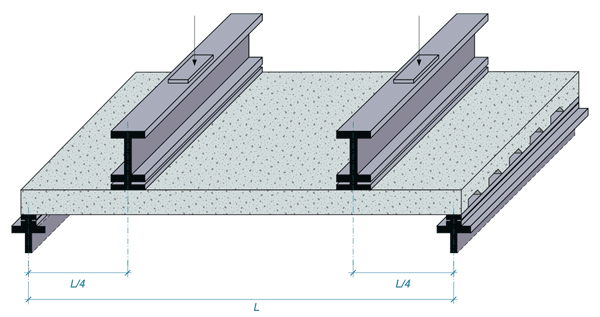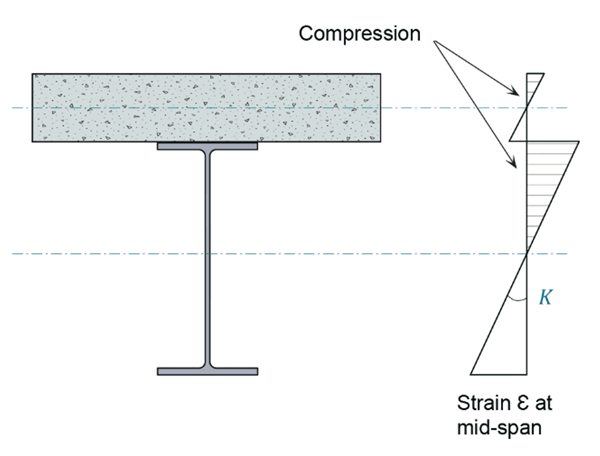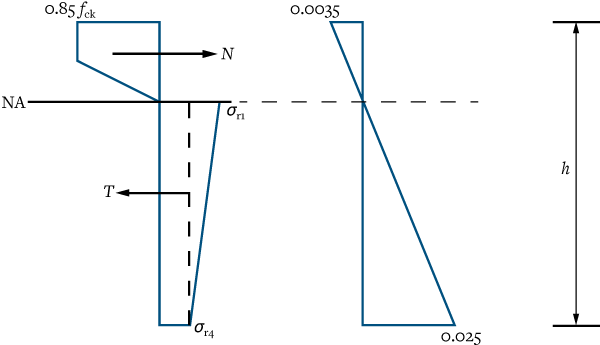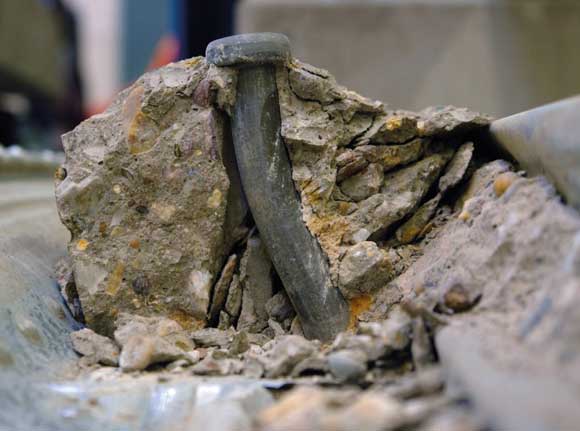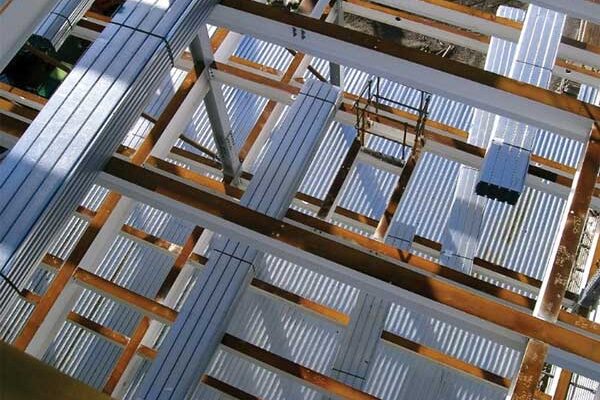Technical
AD 517: Heavy concentrated loads on composite slabs
This note revisits the subject of concentrated loads on composite slabs. Earlier notes AD450 and AD477 considered how to design the slab, and particularly the transverse reinforcement needed, when such loads may start to be significant. In this note we consider the implications of trying to support ‘very large’ concentrated loads, and the tricky issue of defining ‘very large’. The guidance is applicable to both permanent and temporary concentrated loads.
The shear connection found in composite beams normally comprises shear studs, welded to the steel beam at regular intervals. This is effectively a generic solution because the resistance of each stud can be determined by reference to a design code such as Eurocode 4. Using this resistance, the total force that can be transferred between steel and concrete due to ‘composite action’ can be easily calculated. For composite slabs the steel element is proprietary profiled decking, and interaction with the concrete is achieved through a combination of embossments rolled into the decking, and any re-entrant parts of the profile shape. This means that the ‘composite action’ that can be achieved is specific to each deck and is determined by tests undertaken by the manufacturer.
BS EN 1994-1-1 Annex B describes how decking tests should be undertaken (Figure 1), and the results analysed. It is worth noting that the test procedure includes some initial load cycles to break down any chemical bond and ensure only mechanical interlock (which can be guaranteed every time a load is applied to a slab) is taken into account in design. Loading then comprises the self-weight, which is of course a UDL, plus concentrated imposed loads at quarter span points. The results are used to determine either the m and k values, or τu,Rd. These are used in two different approaches, but in both cases determine the force that can be transferred between steel and concrete, which is therefore specific to a given deck. In theory they should give the same end result.
The basic means of force transfer between steel and concrete is the same for beams and slabs. As the element bends strains occur in the two materials. For beams, where the position of the interface is clearer, the bottom of the concrete is often in tension and the top of the steel in compression. So, at the interface we get what is known as ‘slip strain’, which is a step in the distribution of strain over the depth of the composite section (Figure 2). This slip strain considered over half a span leads to the end slip that one can see in a composite beam, where the concrete tries to ‘ride over’ the steel. Infinitely stiff shear connection would be needed to prevent this slip.
Consideration of the way the load is applied to a slab in the test used to determine the shear bond means that care should be taken using the predicted values for a slab that is subject to a ‘very large’ concentrated load. ‘Very large’ here means one that will sufficiently change the deflected shape of the slab (the component due to self-weight will not change) so that strains in steel and concrete are no longer represented by those that occurred in the test specimen. The location of the load could be an issue, not just its magnitude. If the ‘slip strain’ is lower, then less force might be generated. If the slip is greater, it could exceed the capacity of the shear connection, and this is a more serious problem.
Trying to quantify the strains that the test specimen experienced, and those that the slab would experience due to a significant point load, is possible but certainly not easy. Then even knowing the difference between the two it would be impossible to accurately predict what that would mean for the force transfer between steel and concrete.
One thing that can be easily quantified is the deflection that occurs under different types of load, and because deflections are clearly related to curvatures one could imagine that the slip is a function of the deflection. The imposed loads in a standard test set up will only cause three quarters of the deflection due to the same total load concentrated at mid-span. Deflections due to UDL will be significantly less. So, for the same magnitude of load, slip will be greater for a central concentrated load. Although the level of utilisation in bending would also be higher for the concentrated load, this design output could be misleading – if the greater slip caused the shear bond to pass its slip capacity, then the degree of utilisation would be understated.
Given all this complexity a more pragmatic approach may be preferable:
- Experience tells us that whilst unusual, it is not uncommon for composite slabs to be subject to concentrated loads up to 40 kN. This suggests that any impact on shear bond is limited.
- The slab could be assessed considering the decking as permanent formwork only, i.e. ignoring any shear bond. This would give a good indication of the reliance on the decking, noting that the majority of composite slab designs are governed by the construction stage so a reduced composite resistance may not affect the spanning ability.
- Provide trimming steel below the slab if its resistance alone is insufficient.
Whilst appreciating that designers do not always have the flexibility they would like, some points of good practice are also worth noting:
- Place significant concentrated loads over (or adjacent to) supporting beams whenever possible, to avoid loading the slab in bending.
- Use a large stiff bearing area to reduce the demands on punching shear resistance and maximise the width of slab ‘strip’ that carries the load. Unfortunately, this might result in a stiff loading length that does not follow the deflected shape of slab so some localised crushing of the upper surface could occur.
Contact: Graham Couchman
Telephone: 01344 636555
Email: advisory@steel-sci.com








